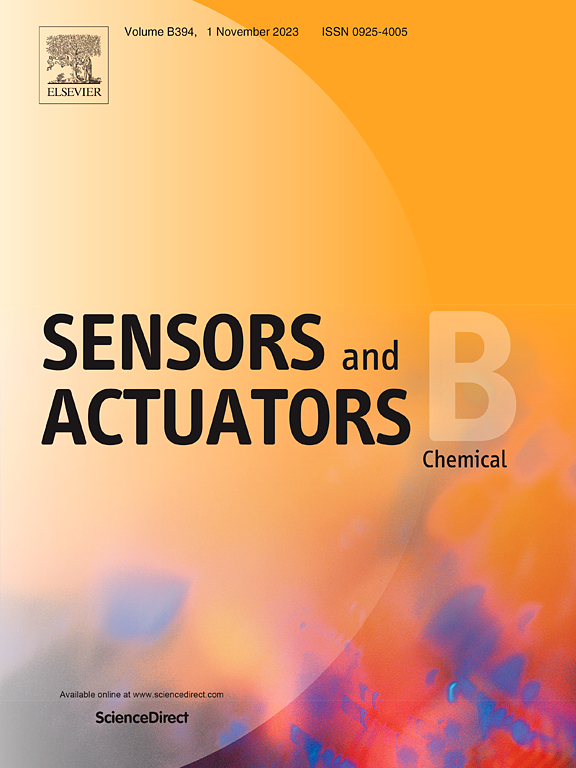可编程靶驱动的MNAzyme和DNA四面体框架协同构建了TMV RNA检测的无标记电化学传感平台
IF 3.7
1区 化学
Q1 CHEMISTRY, ANALYTICAL
引用次数: 0
摘要
烟草花叶病毒(TMV)是研究最深入的植物病毒之一,开发易于制备、经济、灵敏、可靠的TMV RNA检测技术对植物病毒的诊断和治疗具有重要意义。本研究首次构建了一种基于靶标驱动的多组分脱氧核糖核酸酶(MNAzyme)放大器和DNA四面体(TDN)有序修饰的无标记电化学生物传感器来检测TRNA。检测过程从目标RNA触发MNAzyme的组装开始,然后MNAzyme切割发夹DNA (HP)以产生生物素标记的ssDNA,导致循环扩增。附着在电极上的TDN通过顶部捕获探针连接ssDNA,通过生物素和链亲和素的特异性结合产生增强的电流信号。利用TDN和MNAzyme的双信号放大能力,该传感器在优化条件下的检测下限(LOD)为0.17 pM,线性范围为1 pM至10 nM。结果表明,该传感器在复杂的生物环境中具有重要的应用潜力,为植物病毒的检测提供了一个有前景的工具。本文章由计算机程序翻译,如有差异,请以英文原文为准。

Programmable target-driven MNAzyme and DNA tetrahedron framework synergistically constructed label-free electrochemical sensing platform for TMV RNA detection
Tobacco mosaic virus (TMV) is one of the most intensively studied plant viruses, and the development of easy-to-prepare, economical, sensitive, and reliable TMV RNA (TRNA) detection technologies hold great significance for plant virus diagnosis and treatment. In this study, a label-free electrochemical biosensor was constructed for the first time to detect TRNA based on target-driven multicomponent deoxyribonuclease (MNAzyme) amplifier and DNA tetrahedral (TDN) ordered modification. The detection process begins with the target RNA triggering the assembly of MNAzyme, which then cleave the hairpin DNA (HP) to yield biotin-labeled ssDNA, leading to cyclic amplification. The TDN attached to the electrode ligates ssDNA via a top capture probe, generating an enhanced current signal through the specific binding of biotin and streptavidin. By utilizing the dual signal amplification capabilities of TDN and MNAzyme, the fabricated sensor achieved a low limit of detection (LOD) of 0.17 pM and a linear range of 1 pM to 10 nM under optimized conditions. The results demonstrate that the sensor has significant potential for application in complex biological environments, offering a promising tool for the detection of plant viruses.
求助全文
通过发布文献求助,成功后即可免费获取论文全文。
去求助
来源期刊

Sensors and Actuators B: Chemical
工程技术-电化学
CiteScore
14.60
自引率
11.90%
发文量
1776
审稿时长
3.2 months
期刊介绍:
Sensors & Actuators, B: Chemical is an international journal focused on the research and development of chemical transducers. It covers chemical sensors and biosensors, chemical actuators, and analytical microsystems. The journal is interdisciplinary, aiming to publish original works showcasing substantial advancements beyond the current state of the art in these fields, with practical applicability to solving meaningful analytical problems. Review articles are accepted by invitation from an Editor of the journal.
 求助内容:
求助内容: 应助结果提醒方式:
应助结果提醒方式:


